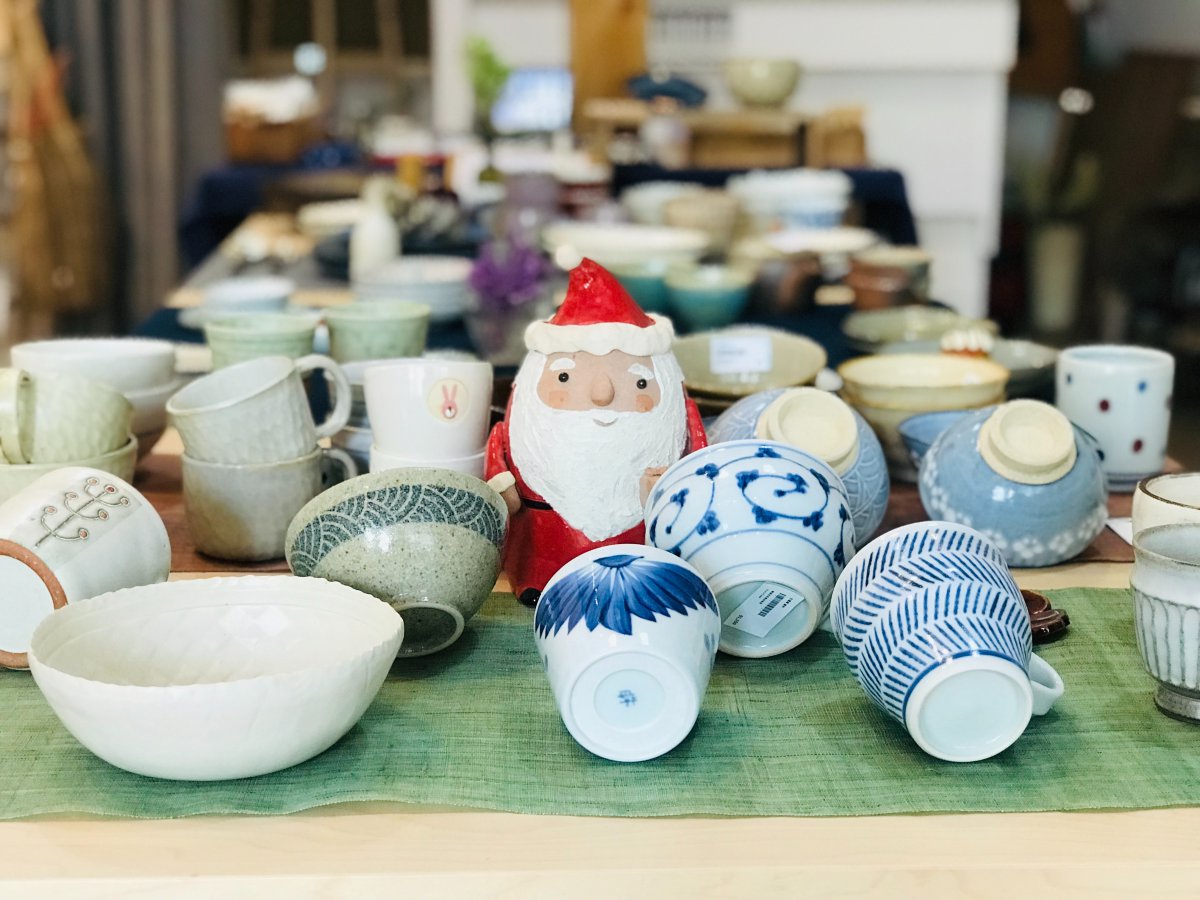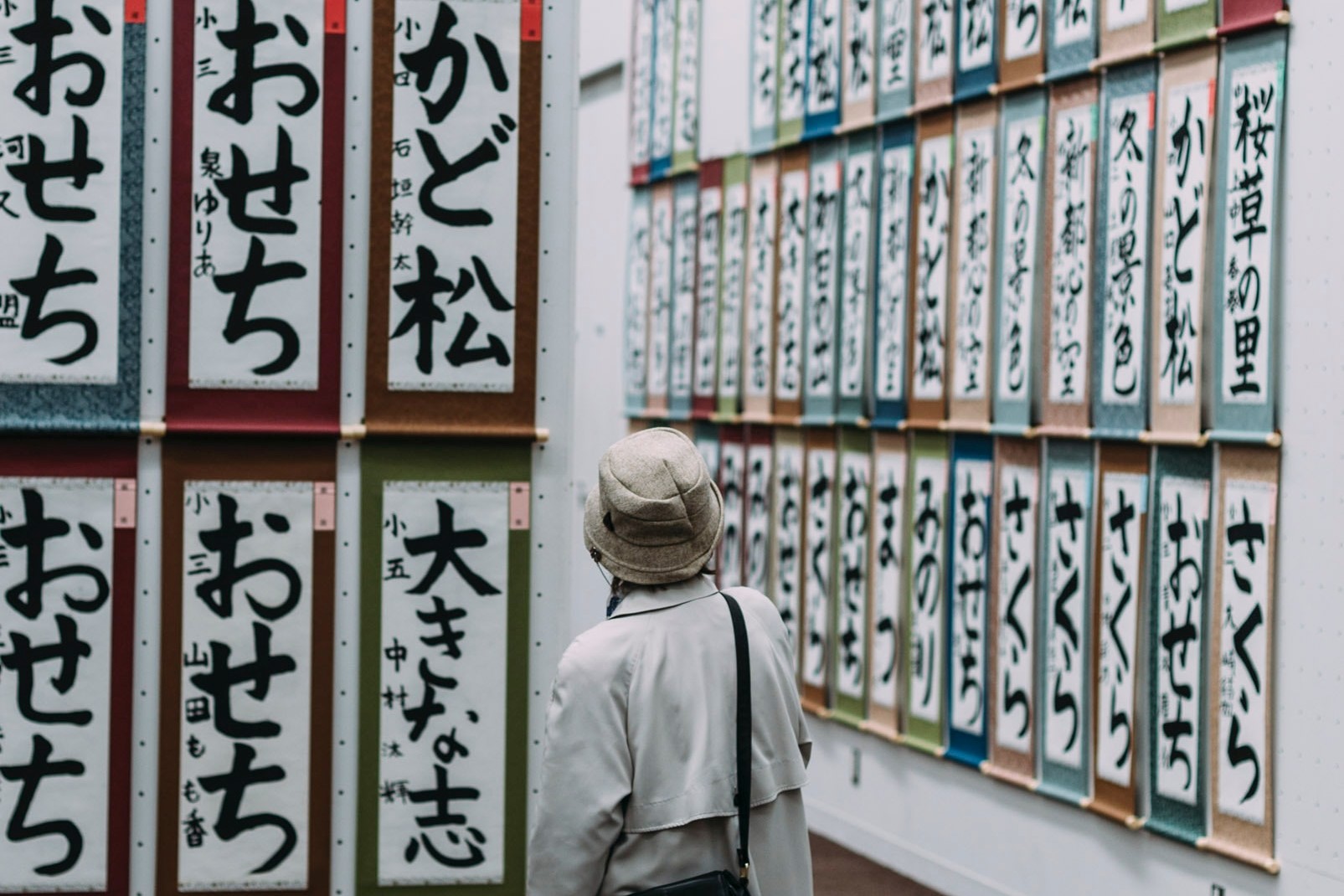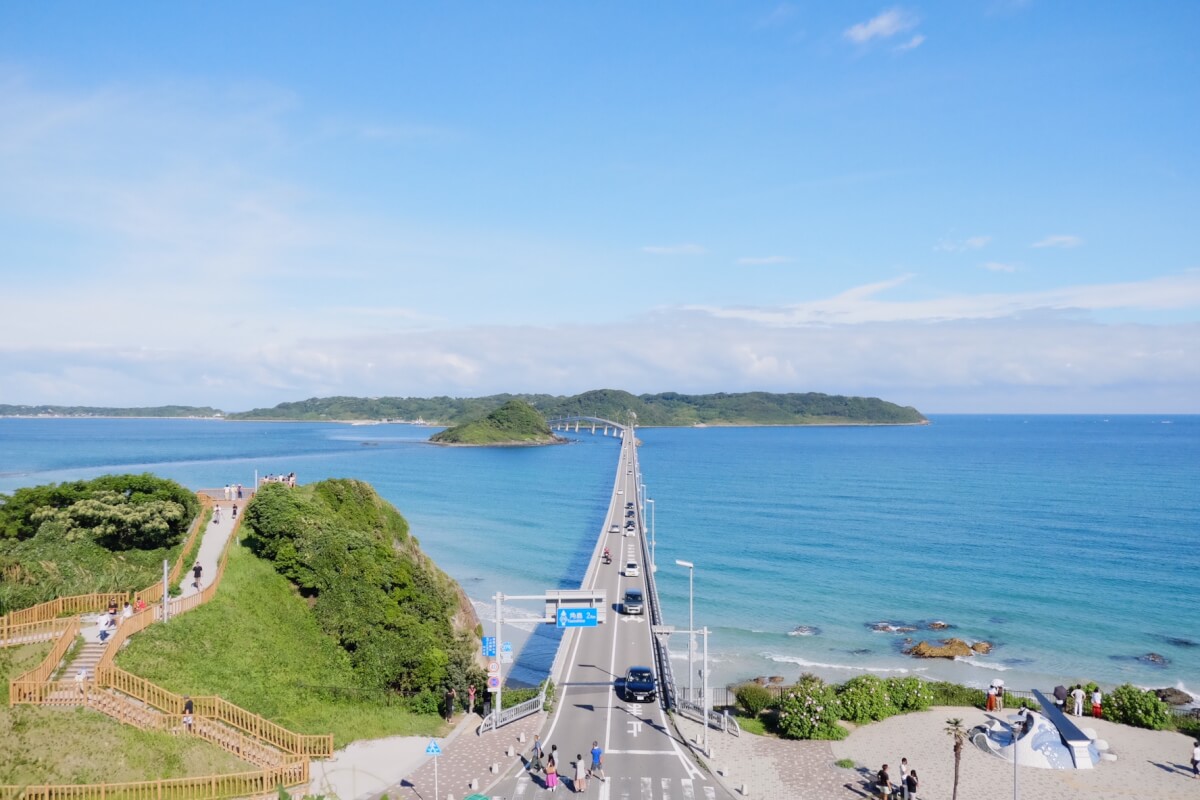Pottery and ceramic arts, are one of Japan’s oldest and most valued Japanese crafts and art forms. Combining art and tradition beautifully and by illustrating Japanese technical brilliance and aesthetics, it reflects the values of the Japanese culture. Japanese pottery has a long history, and has evolved over time with the changes and improvements in technology and materials. These developments have led to different pottery styles in different areas of Japan. Though, the essence of the Japanese pottery often includes the concepts of wabi (quiet taste), sabi (elegant simplicity) and shibui (austerity). Few things capture the essence of wabi-sabi better than Japanese pottery. In ceramics, the Japanese admire accidental effects, misshaped surfaces, and other imperfections that resemble natural forms. Nowadays, the ceramics and pottery, still forms an integral part of the Japanese culture and are used in the everyday life. In this article, we’ll have a closer look at the Japanese pottery and give you a list of the top places you should visit to experience the Japanese pottery.
- History of Japanese pottery
- Pottery towns in Japan today
- 1. Arita, Saga prefecture
- 2. Mashiko, Tochigi Prefecture
- 3. Mino, Gifu Prefecture
- 4. Tokoname, Aichi Prefecture
- 5. Seto, Aichi Prefecture
- 6. Kanazawa, Kutani Yaki, Ishikawa Prefecture
- 7. Shigaraki, Shiga Prefecture
- 8. Kyoto, Kyoto Prefecture
- 9. Hagi, Yamaguchi Prefecture
- 10. Bizen, Okayama prefecture
- 11. Tobe, Ehime Prefecture
- Other articles you may also like
History of Japanese pottery
Ceramic art and crafts in Japan developed along with other traditional cultural traditions, such as the tea ceremony, flower arrangement, and specialty foods. Japanese ceramics have a long history stretching over 16,500 years. The very first ceramics were produced in the Jomon period (Japanese prehistory) with a basic, primitive design in rope coded forms. The glazing of the ceramics was only introduced later as well as different colors. In the Heian period, different kilns started regions began the kilns in those areas to further develop the art of pottery. In the Momoyama period, the tea ceremony introduced the concept of wabi-sabi, which led to new and different shapes and styles of pottery. In the Edo period, the first examples of porcelain, basically a specialized type of ceramic, were successfully created in the Arita region. This porcelain was referred to as Imari ware, and exported abroad.
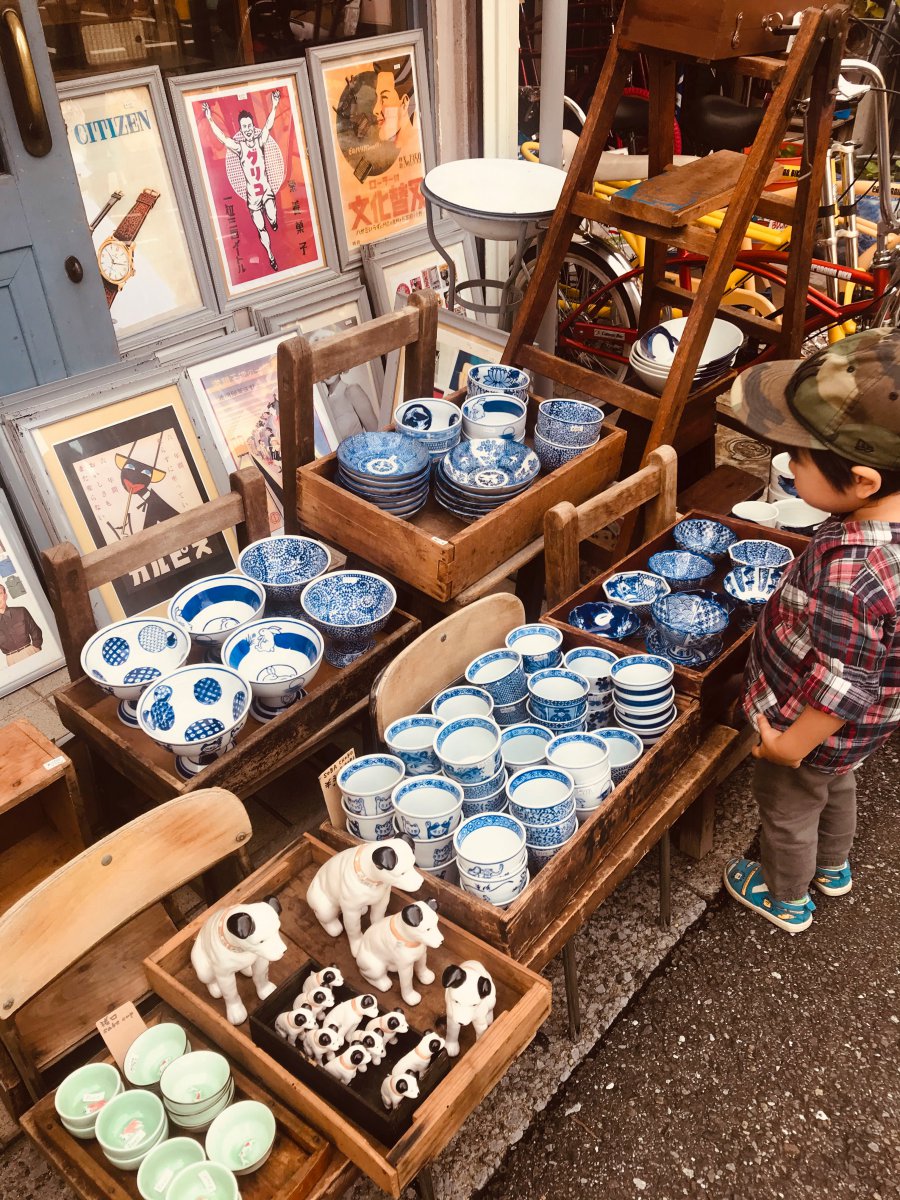
Pottery towns in Japan today
Nowadays, Japan has many unique and traditional pottery towns; all together there are thousands of studios. Each region has its own distinctive ceramic style, with special qualities and characteristics. Ceramics and Japanese pottery still form a big part of the Japanese culture and are used on a daily basis. From beautiful teacups to sophisticated rice bowls, you can find the Japanese ware or yaki (means fried in Japanese) everywhere. We have put together a list with some of the great pottery towns in Japan. At some places there are even pottery festivals and pottery studios that welcome visitors who wish to attend a ceramic workshop. Your personally crafted Japanese ceramic makes for a great, authentic Japanese souvenir!
1. Arita, Saga prefecture
As mentioned before, in the area surrounding Arita in Saga prefecture, the first Japanese porcelain was produced. The porcelain is known as Arita ware, Imari ware and sometimes referred to as Hizen ware (referring to the broader area). The early produce of the ‘home of the Japanese porcelain’ was mainly blue and white designed, but the later developed Kakiemon style that was widely exported to mainly European countries, using more vibrantly coloured designs. These designs were characterized by Chinese and Korean influences, with vivid decorations in indigo blue, red, yellow, and gold, coming from the Korean craftsman who were brought to the area for their expertise and knowledge. The colorful designs, and the solid and durable Imari ware are still popular around the world.
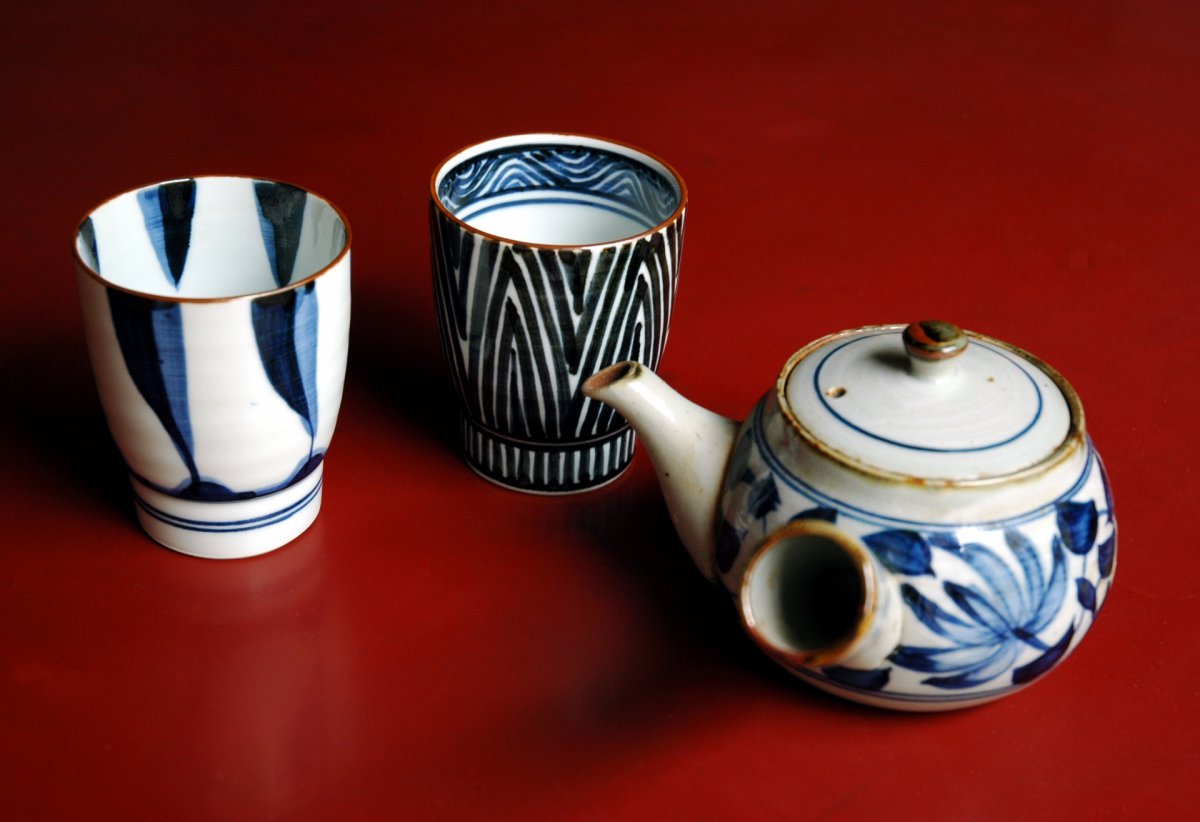
How to get to Arita
2. Mashiko, Tochigi Prefecture
Mashiko ware or Mashiko yaki, is know for its simple but beautiful design, using clay that is rich in silicic acid and iron and has a high plasticity, making it easy to shape. This type of clay is also known to be highly fire-resistant. No extra materials are added, which allows its thickness. While this heavy pottery is somewhat fragile and can easily break, there is a unique and rustic practicality to its thick clay texture.
Take a look at this Mashiko map to find pottery classes which might be of interest to you.
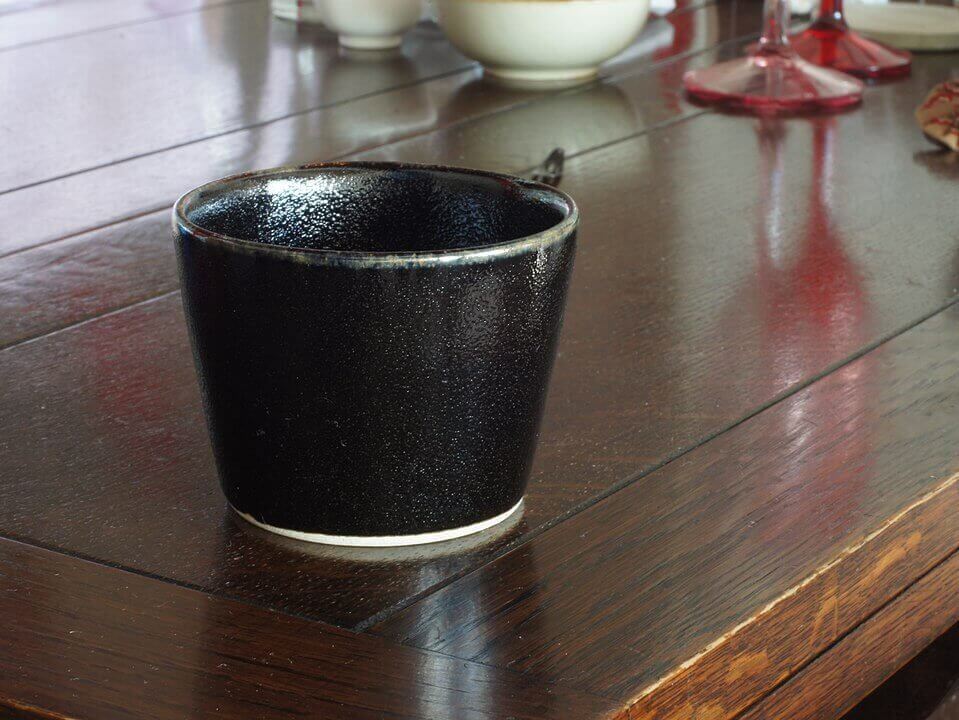
How to get to Mashiko
Take the shinkansen to Utsunomiya Station and change to Toya bus toward Mashiko Station.
3. Mino, Gifu Prefecture
Mino yaki is produced using a high-quality clay produced in Mino province in southeastern Gifu Prefecture. Mino ware does not maintain a single style, but instead has over 15 types registered as traditional handicrafts. The most famous style, called Oribe ware, was originally based on the aesthetics of the tea ceremony and has a deep green glaze, a unique form and geometrical design patterns. During the Showa period, Mino ware reached the highest production level of Japan, with around 50% of Japanese pottery being produced in Mino.
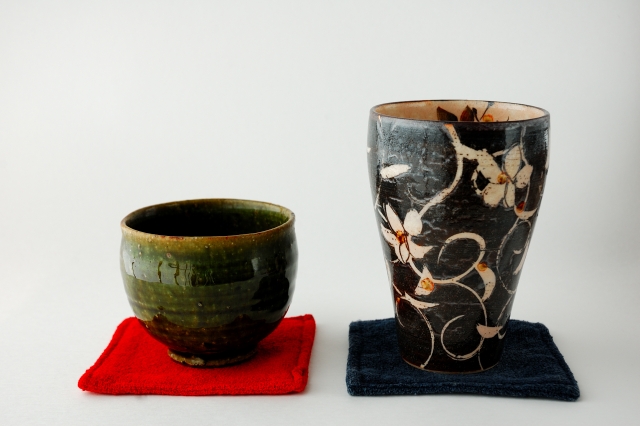
You also find a variety of pottery shops in the region, where you will make your own Mino pottery.
How to get to Mino
From Gifu Station take the JR Takayama Line to Mino-Ota Station. Change to the Nagawagawa Line for Minoshi Station. The trip takes a little over an hour.
4. Tokoname, Aichi Prefecture
The traditional craft of Tokoname ware comes from one of the Six Ancient Kilns of Japan. Tokoname ware was created in the second part of the Heian period, making it an incredibly ancient form of Japanese pottery. The clay from the Tokoname area contains large amount of iron, causing its unique red colour. The red small porcelain teapots are popular today because the iron is said to soften the bitterness of some tea.
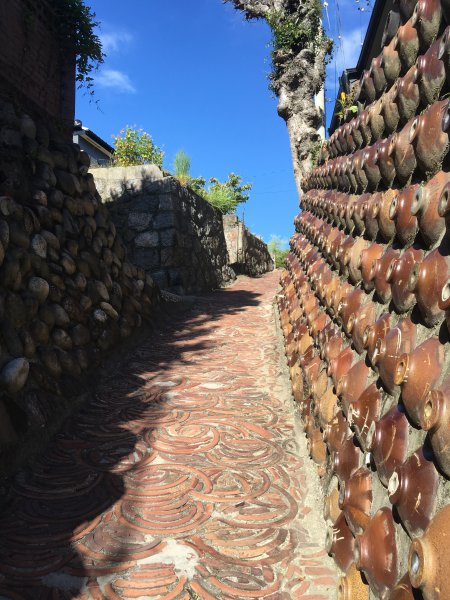
In Tokoname, you’ll find the Tokoname Pottery Path, a walkway with many galleries and workshops displaying various types of Tokoname ware.
Tokoname Walking Tour and Visiting Pottery Studio
How to get to Tokoname
Tokoname can be reached in 35 min by train from Nagoya Station.
5. Seto, Aichi Prefecture
Seto region has a long history of ceramics production. Japan’s first glazed ware was also produced in Seto in the latter half of the 10th century. In the Meiji Period, the production of Seto porcelain truly prospered and this production continues steadily up until this day. A generic name for pottery in Japanese, setomono, is named after Seto’s defining association.
Seto has several museums dedicated to ceramics, including the Seto-gura Museum, across the river from the main station. Or you can join this tour from Nagoya station.
How to get to Seto
From Nagoya take a 40-min train to Setoshi Station.
6. Kanazawa, Kutani Yaki, Ishikawa Prefecture
Kutani ware is known for its vivid colors, bold and elegant designs and is produced using a particular technique of overglaze painting: pigment are used to paint a pattern over the glaze after which the piece is fired again in the kiln. Kutani ware are known for their vivid color; (green, yellow, red, purple, and Prussian blue). Their designs over depict flowers, birds, and landscapes.
There are numerous galleries for Kutani ware in Kanazawa city. In this shop listed below, you can join a short workshop. Alternatively, you can also go to Kaga Onsen station and visit several workshops and galleries. While you’re there, enjoy the Kaga hot spring at the same time!
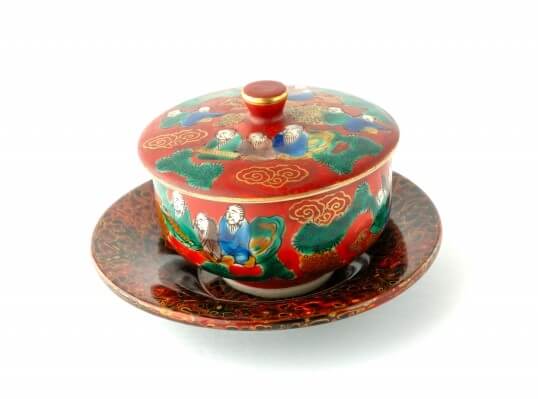
How to get to Kanazawa
From Tokyo take the Shinkansen to Kanazawa Station.
7. Shigaraki, Shiga Prefecture
Shigaraki ware is a type of Japanese pottery, made from clay with a warm red color that is also very durable. Shigaraki ware is unique because of its warmth and rich expressiveness and the end product often has a red color with brown overtones. Together with the Bizen ware, this type of Japanese pottery was the first pottery to be used in tea ceremonies and with the increasing popularity of tea ceremonies over time, Shigaraki ware was produced in large quantities. The rusty glaze on the scorched portions of Shigaraki ware is highly prized in tea utensils and tea masters favoured Shigaraki ware, because they thought that Shigaraki ware embodies the aesthetic qualities of wabi-sabi. Shigaraki ware is also famous for the Tanuki figures that you can find all across the country.
But this tour departs from Kyoto station with a guide, and you can not only learn and make pottery but can walk through the vast tea fields on the way back.
How to get to Shigaraki
From Kyoto, take the train to Kusatsu Station and change to the train headed for Shigaraki Station.
8. Kyoto, Kyoto Prefecture
Kyo-yaki, kiyomizu yaki, has been produced in Kyoto since about the mid 17th century. Kyoto wares are in the classical Japanese style, retaining much of the traditional taste of the ancient court. Many of these were formed on a pottery wheel and have fine, classically proportioned walls. A wide range of colors (red, blue, yellow, green, purple, black, silver, and gold) is used.
There are a number of pottery shops along the slope leading up to the Kiyomizu dera temple, offering workshops and Kyo pottery. Join our guided tour to learn more about the highlight of that area!
9. Hagi, Yamaguchi Prefecture
Hagi ware, hagi yaki, is rarely decorated, and kept as simple as possible and it’s known for its its milky, white-glazed style. Hagi yaki is one of the most famous types of pottery in Japan and one of the most important features of Hagi ware is the use of raw materials in an way that helps maintain its original texture. Hagi ware remains still very popular today. There are no two similar Hagi ware items, the individuality of this pottery is produced by deep cracks in the clay expanding and contracting the tea residuals. Hagi ware also changes color during its use, bringing on an unpredictable final touch.
The first week of May is the annual Hagi-yaki Festival with works from over 50 local kilns on sale. have a look at their official website for more information and a list of the potteries in the town that are open for the first-time potter.
How to get to Hagi
JR Shin-Yamaguchi Station is the nearest Shinkansen station to Hagi. There are hourly direct buses to Hagi running from directly outside the JR Shin-Yamaguchi station.
10. Bizen, Okayama prefecture
Bizen ware, bizen yaki, also belongs to the Six Ancient Kilns of Japan. Bizen ware is considered to be one of the most outstanding Japanese kilns with traditions that remain up to this day. Bizen ware has a unique manufacturing method as it does not use glazing. The reason for this is that the clay collected around the city of Bizen, is difficult to take on enamel. It also requires a much longer time to fire. Bizen ware was highly admired by tea masters who felt the pieces were suited to the spirit of wabi-sabi in their ceremonies.
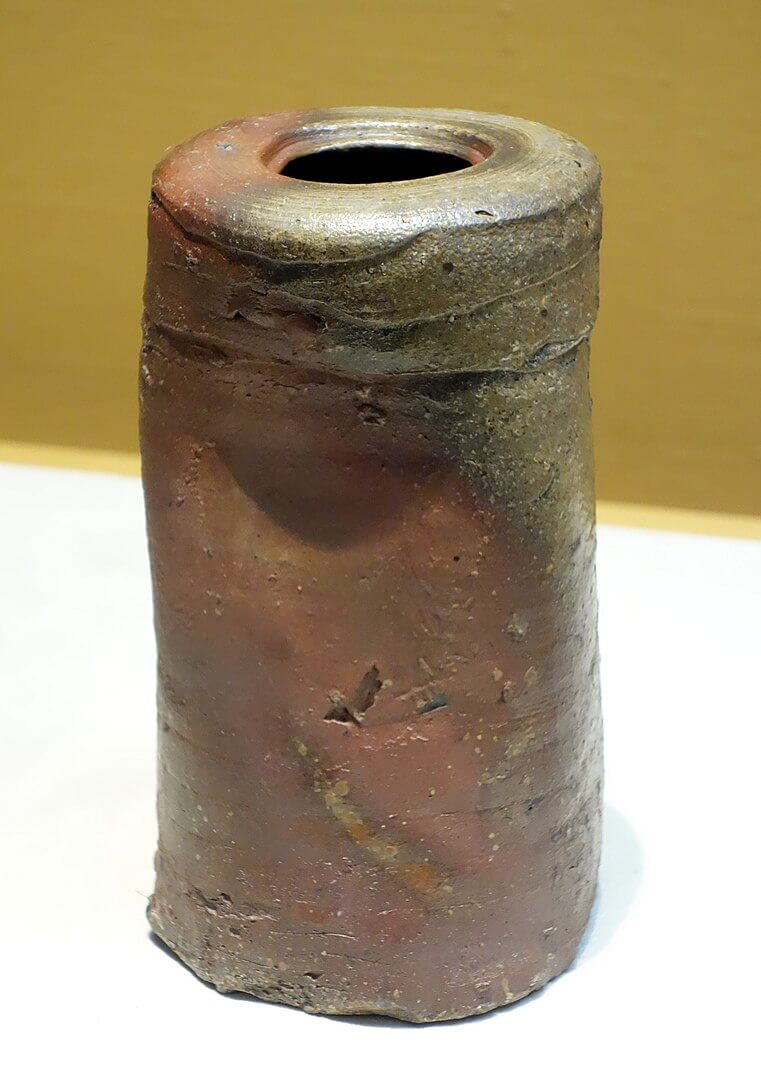
In the city of Bizen, you can visit the Bizen-yaki Museum or try to produce your own Bizen-style pottery. Most of the kilns and guilds are located near the station. Bizen also offers a long cycling route along an old railway line, and a seafood market particularly known for fresh oysters.
How to get to Bizen
From Okayama Station take the train headed to Imbe Station.
11. Tobe, Ehime Prefecture
What makes Tobe ware unique is its beautiful white ceramic texture with a slight touch of gray, which appears to let light pass through. Because the coloring of the ceramic ware changes depending on the amount of iron in the porcelain stone, Tobe ware artisans have come up with solutions like improving the glaze or hand drawing a creative pattern. Tobe ware continues to be appreciated as handmade ceramic ware that is easy to use in the home today.
The town of Tobe hosts a Tobe Ware Festival twice a year, in the spring and fall. During these events around 60 potteries showcast their amazing work. At Tobe-yaki Togeikan, you can make a piece for yourself too.
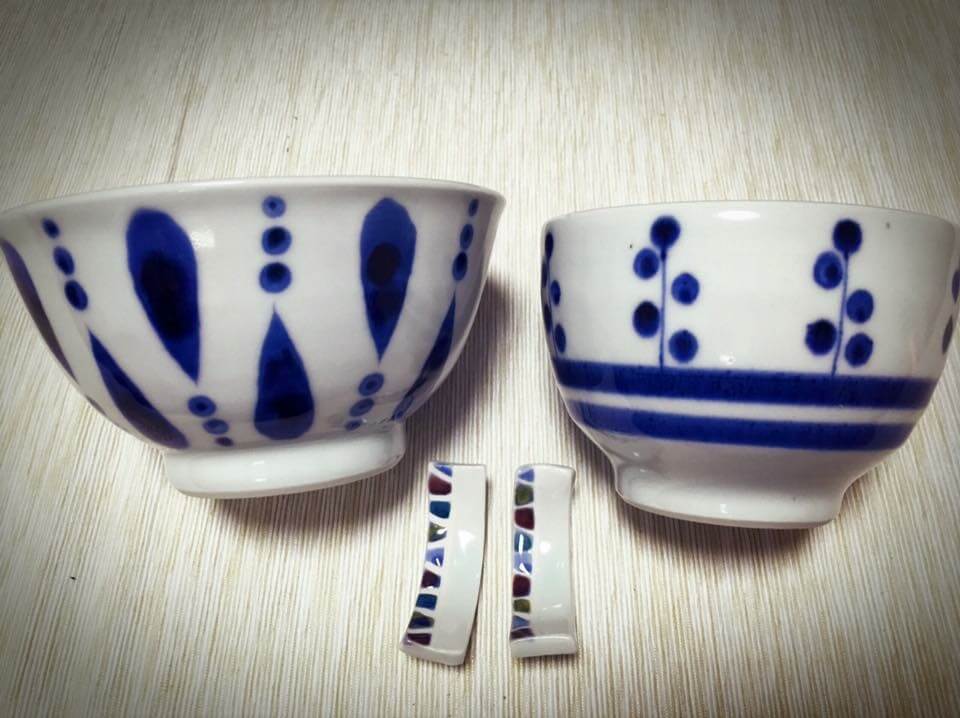
How to get to Tobe
To get to Tobe town, take a 40 min bus ride from Matsuyama city.
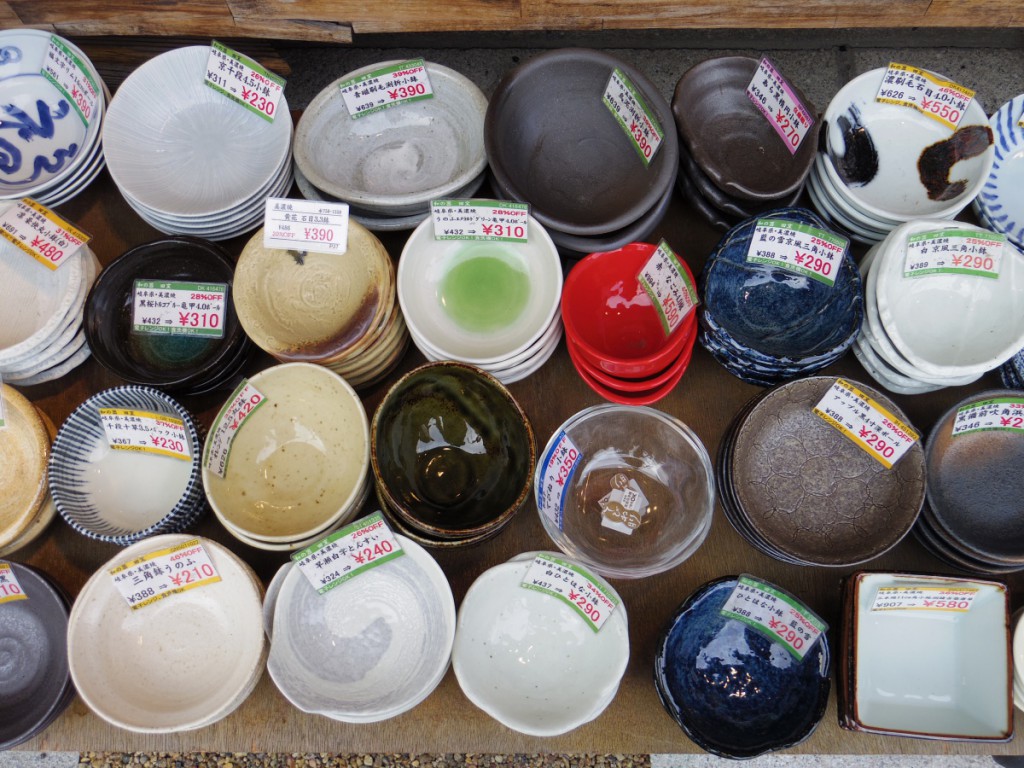
Japanese ware is like a reflection of Japanese culture and values and still plays an important role in the Japanese daily life. It is Japan’s oldest and most valued Japanese crafts and art forms. During your visit to Japan, you will see many different pottery styles, from rice bowl to sake bottles and tea cups. The beautiful creations are everywhere. They also make for a great souvenir to take home!
Follow us on Instagram or Facebook for more travel inspiration. Or tag us to get featured!
Happy travelling!
Other articles you may also like
This post may contain some affiliate links. When you click through and make a purchase we may receive some commission, at no extra costs to you
